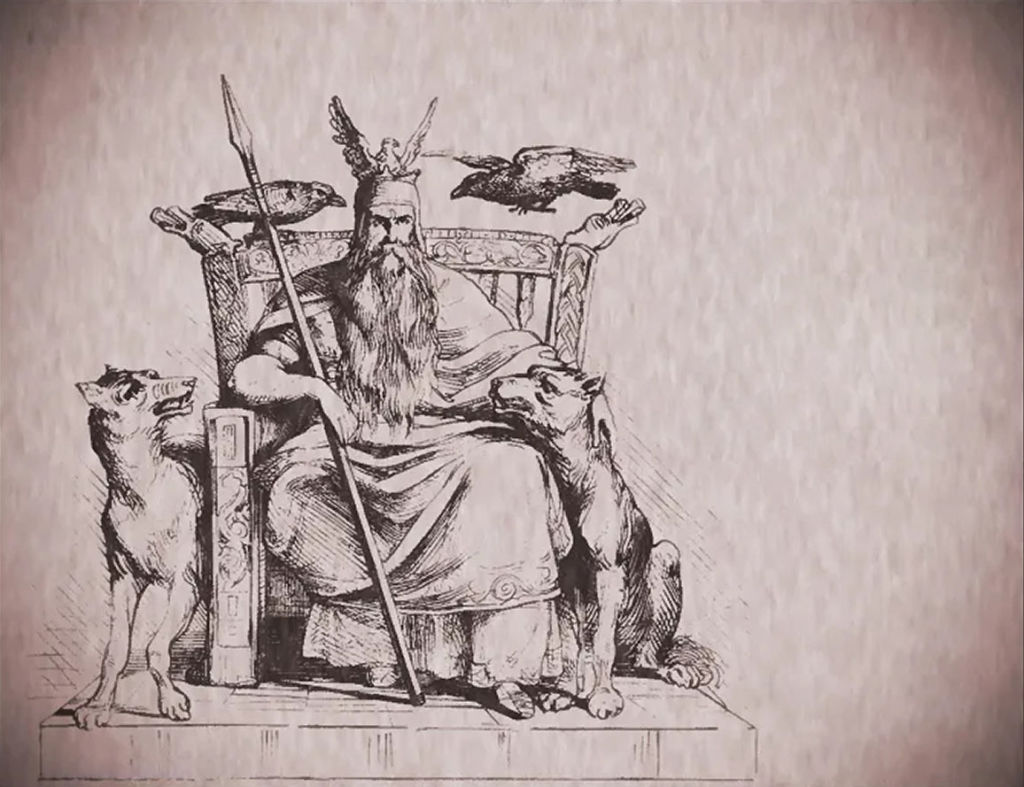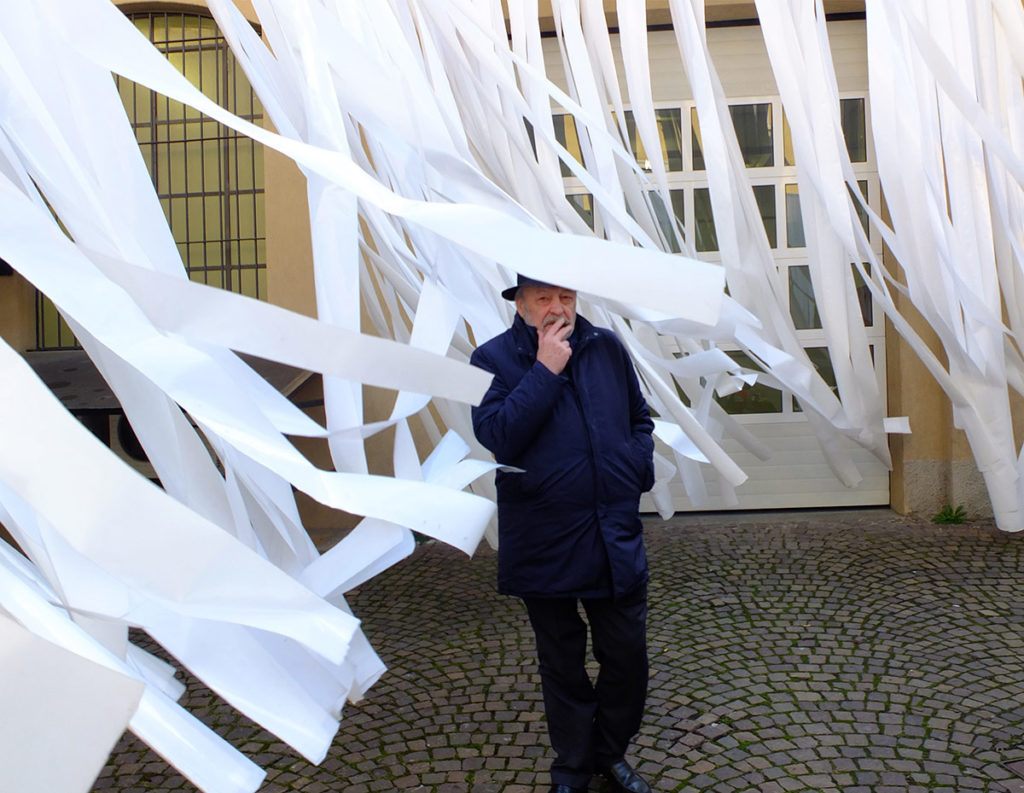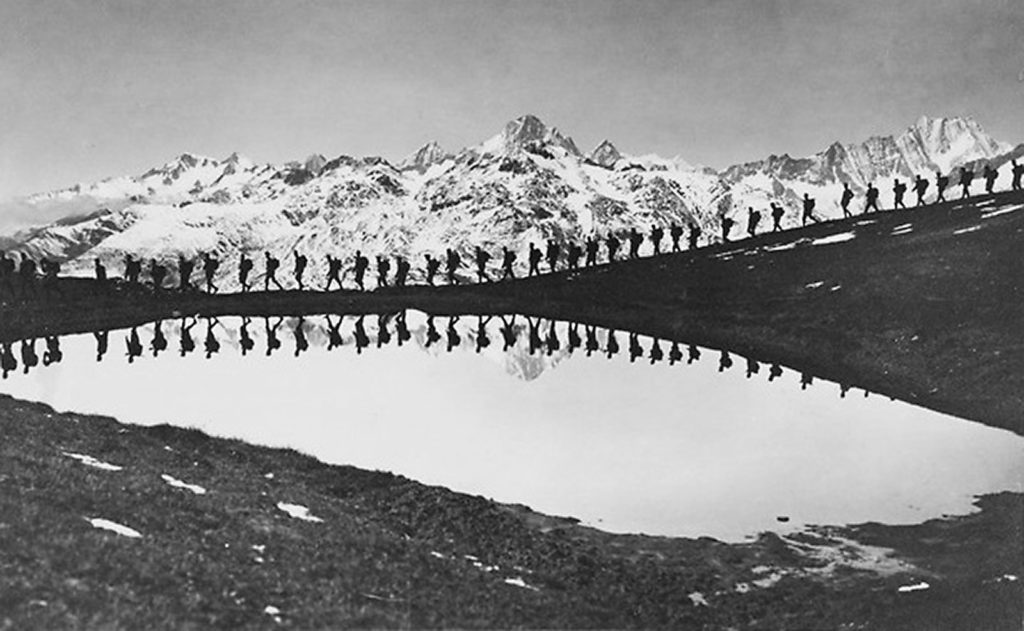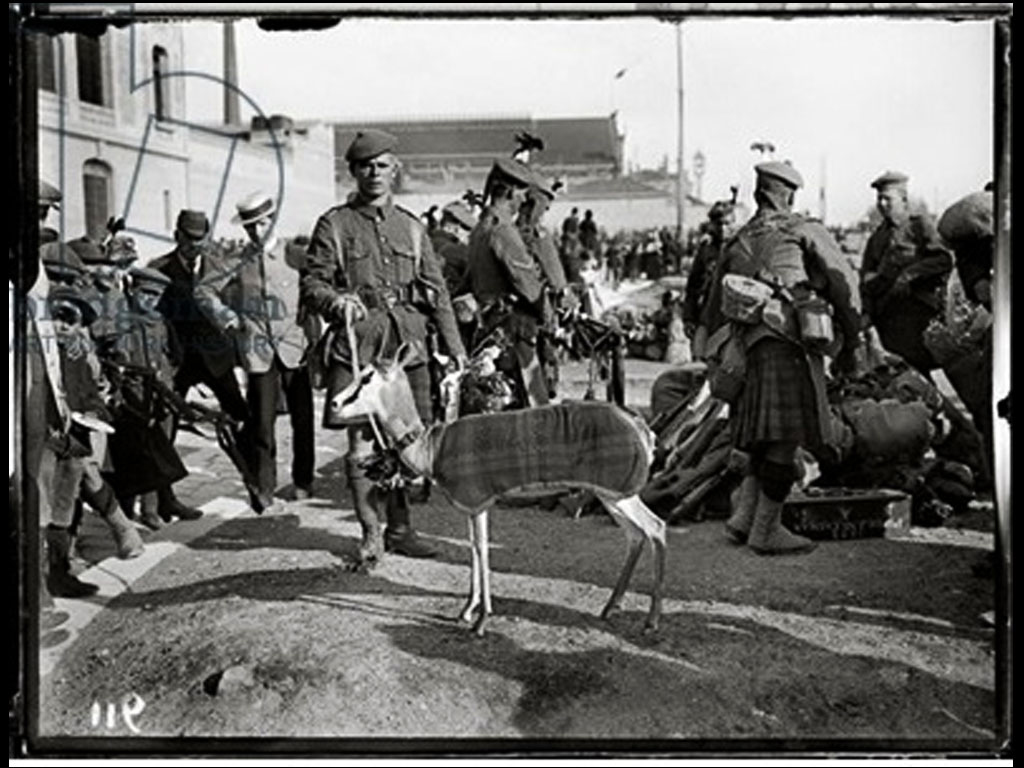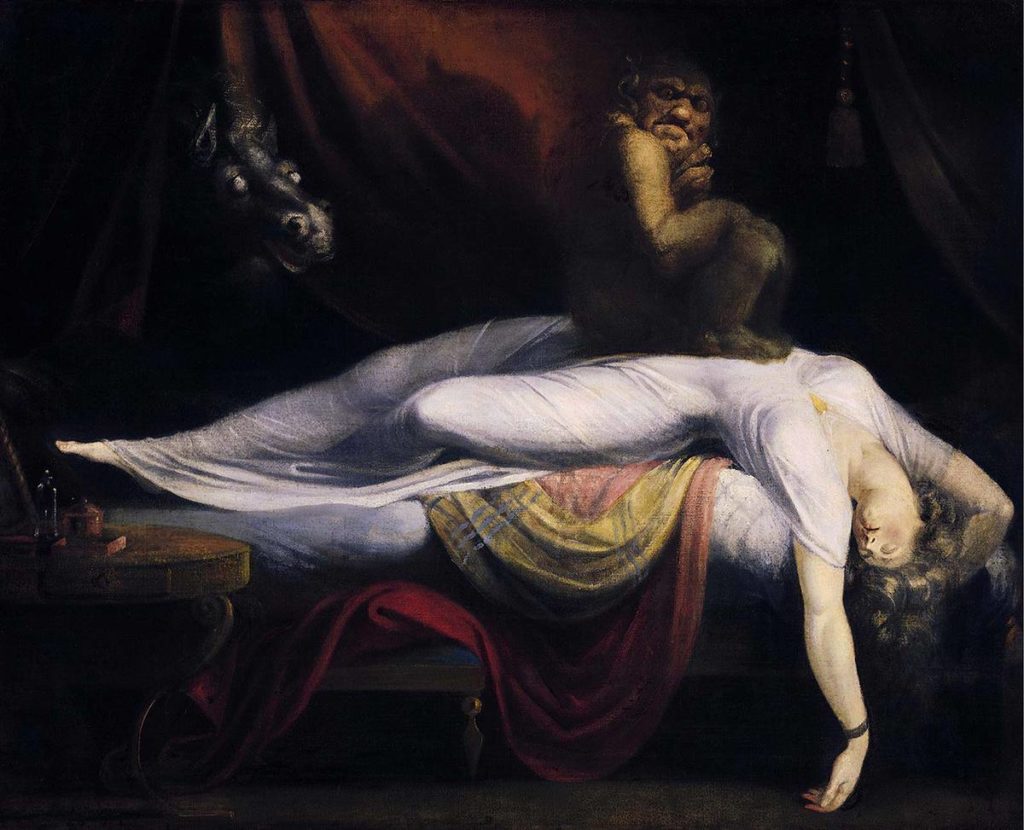Since the mid-1990s, Brice Dellsperger has been creating a series of videos catalogued under the generic title Body Double. In this work, shot by shot, the artist remakes cult scenes from film history, particularly big industry Hollywood movies. This ‘doubling’ strives to make a complete copy of an original scene (set, actors, cinematography…). There is often just one “actor” playing every role: lead parts and extras are embodied by the same person, perched atop high heels, equipped with fake breasts and masked in make-up. Assembled in 2D spaces thanks to 3D modeling tools and special effects, these multiplying bodies illustrate how desires and identities turn into memes.
Dressed to Kill Hollywood
The idea behind Body Double is to visually and conceptually disturb hierarchical categories and signs. Brice Dellsperger usually uses one single body (multiplied) or “double” bodies (like twin sisters, for example) to act out all the parts in the original film, which is played live on the film set. The gestures are identical. Overdubbed and multiplied through the use of various special effects, these doubles appear like flawed holograms, as the financial resources available for such DIY filmmaking are disproportionately small compared to the technical and photogenic monstrosities they reproduce.
And so the original, as it loses its own identity, finds itself inhabited by a stranger’s body. A stranger duplicated as many times as the remake requires. This or these new assembled bodies, identical in rank and gender, thwart the usual hierarchy of commercial film casting. The eye is no longer focused on a figure that carries the film alone, like an image on a movie poster. On the contrary, it wanders, caught up in a kind of psychedelic, post-sexual hallucination.
Body Double questions the sexual and material identity of Hollywood cinema, its ideological template and hegemonic automatisms. Dellsperger re-populates these celluloid ghosts with strange-looking, sometimes queer digital creatures. By masking over these cinematographic surfaces, the artist re-appropriates filmmaking at its most institutional, its ideological spectacle, in other words, the engineered mode of operation and regulated emotional behavior that is seen as a model for the whole planet.
This is what drove American activist and historian Vito Russo, in his book The Celluloid Closet (1981), to criticize how Hollywood has, since its Golden Age, propagated stereotypical and harmful images of homosexuality in order to mock it, repress it and leave it closeted, both on screen and in real life. The homosexual characters from Hollywood cinema that Russo uses as examples are always effeminate, sad, psychopathic, androgynous, guilty, outside binary gender norms (male/female) and therefore fake (because they pass from one sexual category to another). Like the character Dr. Elliott, who kills while cross-dressed as his female alter ego Bobbi in Dressed to Kill by Brian de Palma (1980). Or Norman Bates, who kills while wearing his mother’s clothes in Alfred Hitchcock’s Psycho (1960). These films have often been remade by Dellsperger, who watches them, he says, with a “decentered eye”, that is, from the sexual and historical margins of cinema.
Meme and parody
In his work, Dellsperger re-examines the cultural and ideological stakes of gender and role distribution in the film industry. By using duplication, he embarks on a homo-sexualization and socio-sexual homogenization of all the characters in his remakes. Multiplying and juxtaposing identical silhouettes, uniting them in two-dimensional spaces by way of 3D and special effects, manifests how desires and identities become memes: desires and identities shaped by the technological extensions of capitalism, like shopping centers built on the model of hyper-spectacular entertainment, algorithms and their neo-identitary configurations, dating platforms (Facebook, Tinder…), and targeted market predation (publipostage)…
In his book The Selfish Gene from 1976, British biologist and ethologist Richard Dawkins defines ‘memes’ as small units of transmission, analogous to genes, which spread from person to person through copying or imitation. The term ‘meme’ is derived from the Greek term mimema, which designates “something that is imitated”. Like genes, memes are defined as replicators subject to variation, the effects of competition, selection and retention. Dawkins therefore uses this notion to analyze cultural phenomena according to an evolutionary biology model. Which is why he speaks of units of cultural transmission or imitation that can be melodies, beliefs, ideas, slogans or even clothing trends, to which we might add gender. These units spread from one person to the next through copying or imitation. Dawkins thus draws an analogy with the parasite, arguing that a fertile meme implanted in a parasite host (like a brain) transforms it into a vehicle that helps it propagate, like a virus. Memes circulating on the Internet borrow these characteristics—except that they consist of images with added text, or rather a subtitle, often as a parody, that dismisses the seriousness and authenticity of the initial image. The basic unit (an image, a gif, a song, a video) therefore finds itself with a parasite, augmented through a collective and accumulative intervention that distorts and overruns the semantic possibilities of the initial unit.
As such, Body Double follows the same logic. The body doubles are “meme-tic” by nature, all while suggesting an alternative to the “hyper-memetic” logic of the mass media they parody: I’m talking about the automated as well as ideological identitary loop on which the efficiency of their model and propagation is founded. The Body Double’s sense of caricature comes from the meme. As pastiche, the Body Double videos, by way of repetition, respond directly to the identity stereotypes and the spectacular calibrations exhibited by mass media. In this sense, they’ve been mocking and foretelling, since the 1990s, what would become the Internet mathematics of today. Because these film objects came out at the same time as the Internet was made available for civil society rather than the military. Indeed, they are the contemporaries of HTTP (hypertext transfer protocol) and its corollary the WWW (world wide web), the great global spider web, a concrete utopia materialized in the real world, before the Web became what it is today: a two-dimensional hunting grounds with predatory and prey – that is, an abundance of potential targets.

Brice Dellsperger, Eye Bags, 1995, with Valérie Cachat and Brice Dellsperger. 2 SD videos on 2 screens, 3’47 looped. Courtesy of the artist and Air de Paris, © adagp
1990, neo-erotic
In the 1990s, Dellsperger creates Eyes Bags, a split-screen video that still today remains one of his lesser-known works, and which delves into themes of stage fright and desire. It is a remake of the shopping mall chase scene in Body Double, directed by Brian de Palma in 1984. In Dellsperger’s version, the open-air Californian plaza is replaced by the Nice Étoile shopping center in downtown Nice, provincial ancestor of international malls packed to the brim with visitors—consumers shopping at stores that are all the same… Dellsperger is dressed as a woman. In a skin-tight white skirt, he plays the part of Gloria while his accomplice, a broad-shouldered tomboy, plays Jake. She embodies a kind of queer virility (black vest and sunglasses) and he embodies camp femininity. Each carries a bowling bag in one hand, with a camera contained inside. A practical way to film shot reverse shot as they wander around (Gloria’s buttocks/Jake’s face). The cameras also pick up the slightly voyeuristic, sometimes sneering or even downright suspicious faces of onlookers, as well as the occasional genital bulge of men in tight jeans.
The filmed performance shows, beyond mere parody, the political stakes of sexual (and identity) subversion in a pre-codified cultural and social space—that is, one that is masculine and heteronormative. The queer presence of this pair in the shopping mall also helps us to imagine the future of queer sensibilities in a time of global shops that, like mass media, model object-based culture and behaviorism, and standardized desires, on a planetary scale. Therein lies the irony of their “universality”.
Because entering a mall, like identifying with a certain kind of movie, is to enter global capitalism’s fiction on identity, to respond to and follow its logic, give or take a few variables, and allow oneself to be shaped by the impulses of erotic stimuli and phantasmatic pulls. This kind of space is about maximizing retinal excitation so the body ceases to exist—like at the movies. The viewer-consumer takes up their position on an automated path, entertained and rendered mindless as they are transported through an ambiance of constant 70°F: they move by conveyor belt while their gaze glosses over surfaces, caressing objects displayed in illuminated shop windows that are on day and night, no matter what the weather. It’s the Tinder interface, materialized throughout thousands of square meters.
Algorithms
An algorithm is a model for predicting. It exists to anticipate desire. It is built according to an optimized reality. And when it draws on erroneous, incomplete or general data, it can be harmful. American mathematician and activist Cathy O’Neil takes racism as an example of what can arise from algorithmic logic. A racist, she explains, adopts the principle that individuals of a certain origin will behave badly. “Racists don’t spend a lot of time hunting down reliable data to train their twisted models. And once their model morphs into a belief, it becomes hardwired. It generates poisonous assumptions, yet rarely tests them, settling instead for data that seems to confirm and fortify them. Consequently, racism is the most slovenly of predictive models. It is powered by haphazard data gathering and spurious correlations, reinforced by institutional inequities, and polluted by confirmation bias”—which means, with regard to this last point, a cognitive process that pushes an individual to be partial to certain kinds of information that confirm a previously formulated conviction or hypothesis, while also rejecting any information that may stand in contradiction. And so a meme, like racism, functions according to WMD algorithms, or “Weapons of Math Destruction”, to use O’Neil’s terminology.
These algorithms pre-exist the subject. They produce their own reality and determine our behavior by anticipating it. For the most ambitious amongst them, particularly those by GAFA, whose structures are kept secret, the aim is exponential, on a planetary scale. Developing these kinds of algorithms requires building templates, testing them through data mining, and measuring their membership rate so that behaviors and models ultimately coincide as closely as possible, by mirror effect. In real life as on the Net, whether people are buyers, voters, employees, delinquents or sexual partners, they are surrounded by algorithmic reflections of themselves—like in Body Double. They can never leave their predefined role or initial template which, retroactive and considered neutral, only seeks to confirm its own efficiency—because an algorithm is also a commercial product that must yield profit over time. The targets are therefore kept in place and all other possibilities are ignored, because the model cannot adjust and the criteria are made to last. So the target is surrounded by windows that reflect a deformed portrait of its subjectivity, which becomes its reality. These identity machines are the opposite of the intentionally indeterminate margins occupied by queer identities, because with the power of these conforming or deforming algorithms, a possible desire, retroactively materializes into permanent desire.

Brice Dellsperger, Body Double 17, 2001, with Gwen Roch’ and Morgane Rousseau. 1 SD video on 1 screen, 16’27 looped. Courtesy of the artist and Air de Paris, © adagp
Look Like a Like
But of what is my desire a reflection?
Body Double 17 (2001) is a remake of Twin Peaks: Fire Walk With Me, directed by David Lynch in 1992. In it, Dellsperger re-enacts the 16 minutes during which protagonists Donna and Laura, played here by twin stand-ins Gwen Roch and Morgane Rousseau, go from a suburban single-family home (a supposedly traditional family space) to the Bang Bang nightclub (a place of debauchery where Laura prostitutes herself). Lynch’s screenplay already examines the dichotomies of home/club, good/evil, real/deviant, except that the single-family home (reality) is, for him, also inhabited by dark forces—the mind of Laura Palmer’s father having been hacked by a kind of troll named Bob. Bob wants Laura to become him. She dies because of it.
The Bang Bang club has a double dimension due to its back room where people consume alcohol, drugs and the bodies of others. It is in this dark space that the girls have a kind of revelation: Donna, until then rather reserved, experiences her own body, her sensuality; while Laura, until then distant and domineering, rekindles her care and friendship for Donna.
Everything is mirrored in this space, because in Dellsperger’s version, all of the Twin Peaks: Fire Walk With Me characters are played by the same set of twins. Dellsperger has them go from character to character. They kiss, touch, and lick one another. It’s steamy. The also play all of the supporting roles and extras who are, for the most part, men. In the final scene, hardly audible, in flashing strobe lights, the waif-like twin bodies embody virility, drunkenness and brutality. Much like the principle behind a remake, they are monsters of parody, hacking the film industry’s interpretation of gender. Their interpretations engage and reveal the efficiency of the meme: the capacity of these beings to conform to one image (in this case, virility) and behave like algorithms (the general repetition of this model), to then transmit this to the greatest possible number of people in order to create a group and determine an identity—as well as a sexuality.
In this backroom inhabited by memes, desire is governed by an accumulative economic logic. Here, the reality of desires is replaced here by a pacified, indistinct desire that is consumed and generalized.
Of what is this desire a reflection? Whose desire are memes?
And what do they reflect?
Narcissism, horror and pornography
In a conversation with German art critic Marie-France Rafael, Dellsperger made a connection between his films and our use of social media. He explained: “The algorithm suggests to you profiles or images that you might like—all while evaluating your behavior on the Internet. The algorithm knows beforehand what you will like: it can practically write history before it happens […] We constantly come up against our own reflection of the world, which is offered to us according to our vision. I would call this ‘the condition of contemporary narcissism’: a closed-loop system. I think this is also present in the movies I make because they’re also about loops that make the spectator see themselves and their own condition.”
This is us now, all the more so because this spectacular condition—of watching yourself watch and record history in the living memory of your eyes, in the reality of your life and body—can extend to any aspect of our new “disco ball” of sensibilities: by which I mean, sensibilities in constant rotation, reflecting and mirroring the curved images of capital that know how to adapt to the orbs of our eyes (like in a shopping mall), shiny and scrolling by on our Instagram feeds.
Marie-France Rafael also asked Dellsperger if he’d already thought of making a “Body Double” algorithm. He answered yes, and that for him, it would certainly resemble a nightmare or horror movie, one that would maintain every person in a single parameter of the senses, a single defining parameter.
And so here we are again. Because this is precisely what the first Body Double videos predicted in the 1990s: the exhibition and fabrication of visual and sexual post-ideological techno-identities, post-counter-culture in an era of accelerating communication. On the escalators of Nice Étoile (inaugurated in 1982 at the height of a liberal golden age), Dellsperger and his accomplice predicted the future stakes for queer sensibilities in the era of optimally commodified reality and lives, of their gentrification, to use terminology by American writer and radical activist Sara Shulman. If the Body Double do indeed create a seemingly permanent (and maybe a bit horrible) carnival state, it is undoubtedly because the promised identity and sexual revolution never came, because differences leveled by the complete commodification of beings, desires, voting and membership has replaced the project of subjective, anti-productivist liberation. Viruses, commerce, power games and domination killed the Internet, and us with it.
Thank you to Brice Dellsperger
Translation by Maya Dalinsky
Cover: Brice Dellsperger, Body Double 36, 2019, with Jean Biche. 2 videos 2K on 4 screens, 8’58 looped. Production: Villa Arson Nice, France. Courtesy of the artist and Air de Paris, © adagp


